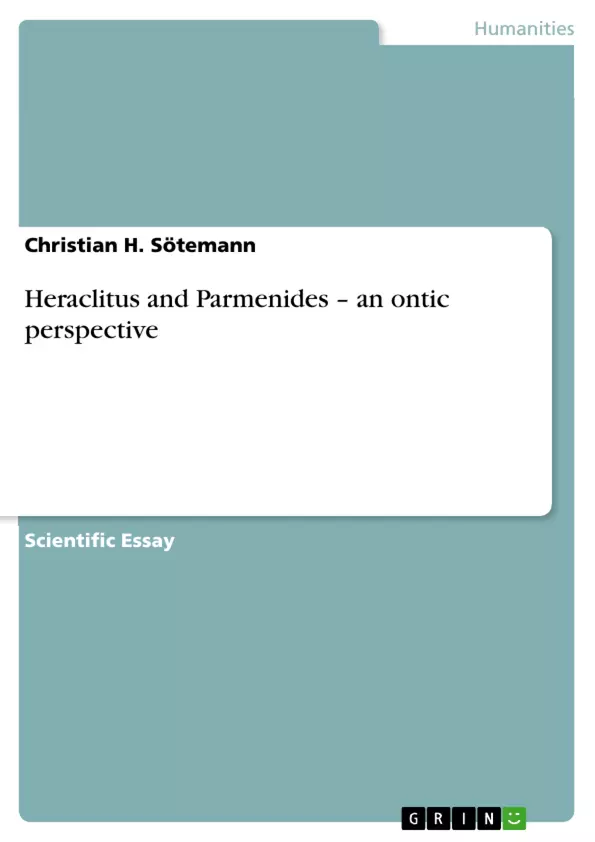The article investigates fragments of the two Presocratic philosophers Heraclitus and Parmenides, which are frequently seen as indicating two drastically different views of the world – the former often being summarized as “Everything flows”, the latter as “Everything rests”. The perspective chosen here is a descriptive one focussing on the “ontic” aspect, i.e. the level of mere being there, of presence. It is discussed how an ontic interpretation of the aforementioned Presocratic fragments allow at least a partial integration of the seemingly diametrically opposed philosophies, namely in maintaining that with all the doubtlessly occurring change in the phenomenal world, change does not imply objects turning into “nothingness”, but rather into different being. Thus, change of state and development is acknowledged on the one hand, as well as the persistence of being on the other hand. Several references to 20th Century philosophy serve to underline the interpretation given here.
Inhaltsverzeichnis (Table of Contents)
- A seeming controversy - flux versus static
- Heraclitus - constant change
- Parmenides - constant being
- Being and becoming from the ontic point of view
- Literature
Zielsetzung und Themenschwerpunkte (Objectives and Key Themes)
This text aims to offer an "ontic perspective" – a descriptive, phenomenological view – on the seemingly contradictory philosophies of Heraclitus and Parmenides. It seeks to reconcile their ideas of constant change and constant being by focusing on the level of mere presence or existence.
- The apparent contradiction between Heraclitus' emphasis on constant change and Parmenides' belief in constant being.
- An ontic interpretation of Heraclitus' and Parmenides' theories.
- The concept of "being" and "becoming" in the context of Presocratic philosophy.
- Analysis of key fragments from Heraclitus' and Parmenides' writings.
- The role of change and permanence in understanding reality.
Zusammenfassung der Kapitel (Chapter Summaries)
Chapter 1: A seeming controversy - flux versus static introduces the apparent conflict between Heraclitus and Parmenides, setting the stage for an ontic interpretation that seeks to bridge this divide. The chapter establishes the context of Presocratic philosophy and the historical debate surrounding these two figures.
Chapter 2: Heraclitus - constant change examines Heraclitus' philosophy through his fragments, focusing on his descriptions of change in the natural world and the human condition. The chapter explores the apparent contradiction within Heraclitus’ ideas, suggesting that things can be both static and in flux at the same time.
- Citar trabajo
- Dr. Christian H. Sötemann (Autor), 2008, Heraclitus and Parmenides – an ontic perspective, Múnich, GRIN Verlag, https://www.grin.com/document/120913



